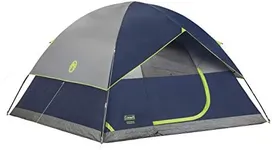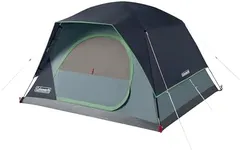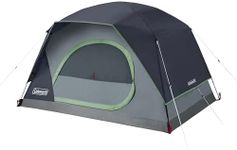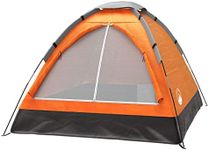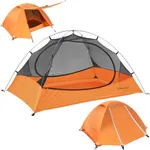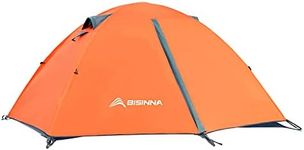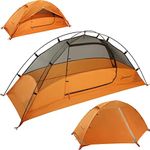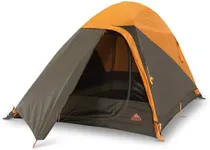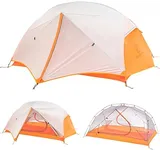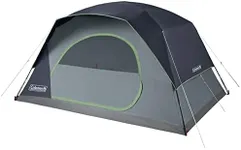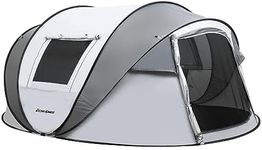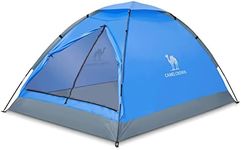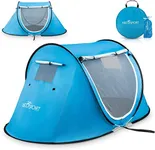Buying Guide for the Best Compact Tents
Choosing the right compact tent can make a significant difference in your outdoor experience. Whether you're planning a solo backpacking trip, a family camping adventure, or a festival weekend, the right tent will provide you with comfort, protection, and ease of use. When selecting a compact tent, consider factors such as size, weight, weather resistance, ease of setup, and additional features. Understanding these key specifications will help you make an informed decision that best suits your needs.Size and CapacitySize and capacity refer to the number of people a tent can accommodate and the amount of space available inside. This is important because it determines how comfortable you will be during your stay. Tents are usually categorized by the number of occupants they can hold, such as 1-person, 2-person, or 4-person tents. If you plan to camp alone, a 1-person tent might suffice, but if you need extra space for gear or prefer more room, consider a 2-person tent. For group camping, choose a tent that matches the number of people plus a little extra space for comfort.
WeightWeight is a crucial factor, especially if you plan to carry the tent over long distances. The weight of a tent includes the tent body, poles, stakes, and any additional accessories. Lightweight tents are ideal for backpacking and hiking, as they are easier to carry. These typically weigh between 1 to 3 pounds. For car camping or short hikes, a slightly heavier tent (3 to 6 pounds) might be acceptable since you won't be carrying it far. Choose a tent that balances weight with durability and comfort based on your specific needs.
Weather ResistanceWeather resistance refers to a tent's ability to withstand various weather conditions, including rain, wind, and temperature changes. This is important to ensure you stay dry and comfortable. Look for tents with a high waterproof rating (measured in millimeters) for the rainfly and floor. A rating of 1,500mm to 3,000mm is generally good for most conditions. Additionally, consider tents with strong poles and a sturdy design to withstand wind. If you plan to camp in extreme conditions, opt for a four-season tent designed for harsh weather.
Ease of SetupEase of setup refers to how quickly and easily you can pitch the tent. This is important, especially if you arrive at your campsite late or in bad weather. Tents with fewer poles and simple designs are generally easier to set up. Some tents come with color-coded poles and clips to make the process more intuitive. Pop-up tents are the easiest to set up but may lack durability. If you value convenience, look for tents with straightforward setup instructions and practice setting it up at home before your trip.
VentilationVentilation is the tent's ability to allow airflow, which is crucial for reducing condensation and maintaining a comfortable temperature inside. Good ventilation helps prevent the buildup of moisture, which can make the interior damp and uncomfortable. Look for tents with multiple mesh windows, vents, and doors to promote airflow. If you plan to camp in warm or humid conditions, prioritize tents with excellent ventilation features. For colder climates, ensure the tent has adjustable vents to balance warmth and airflow.
Additional FeaturesAdditional features include extras that can enhance your camping experience, such as vestibules, gear lofts, and interior pockets. Vestibules provide extra storage space outside the main sleeping area, which is useful for keeping gear dry and accessible. Gear lofts and interior pockets help organize small items and keep the tent tidy. Some tents also come with built-in LED lights or reflective guy lines for added convenience. Consider which features are important to you based on your camping style and needs.
